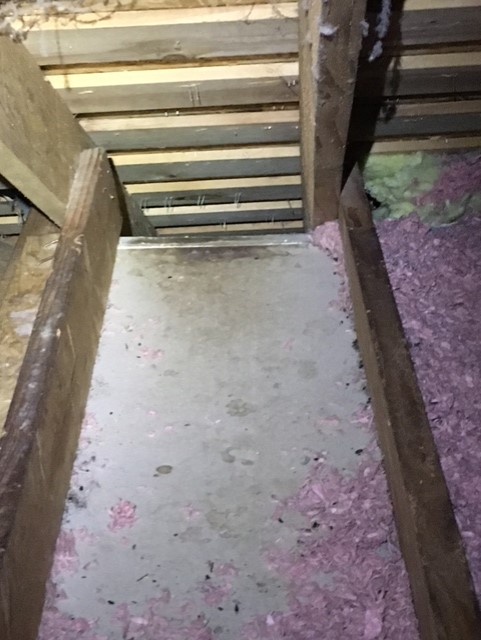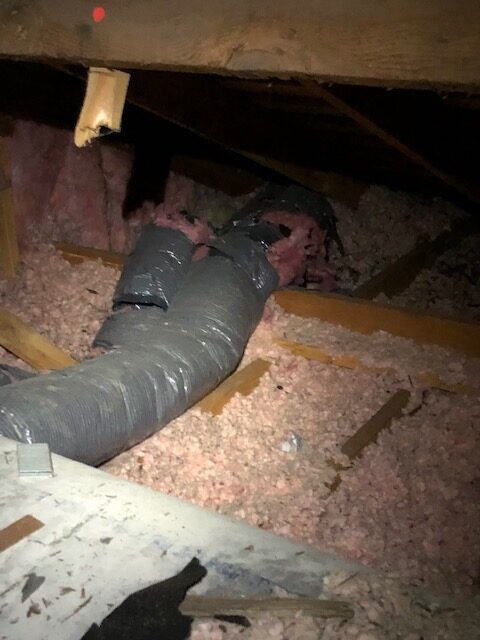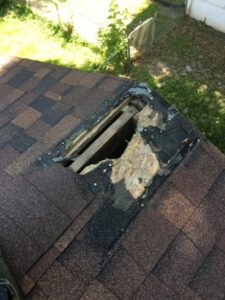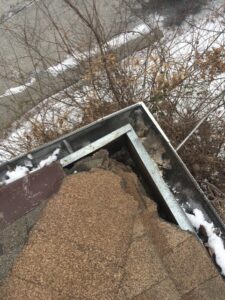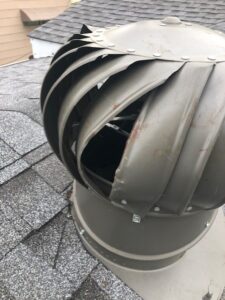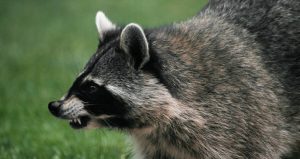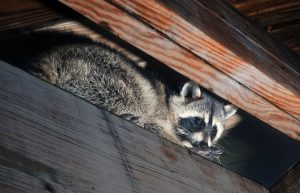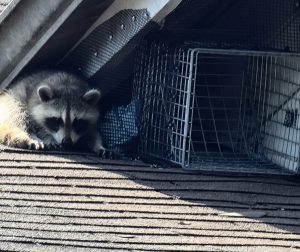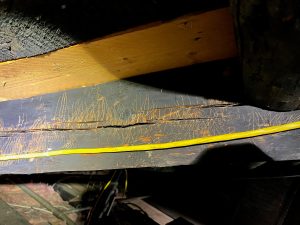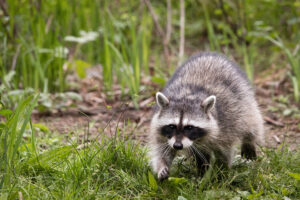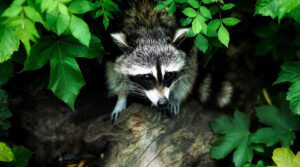One of the most common and damaging nuisance wildlife problems is a raccoon infestation.
Raccoons are curious and resourceful and have adapted to thrive in an urban setting. They have a knack for finding their way into residential areas, often causing a host of problems for homeowners. From rummaging through trash cans to nesting in attics, these clever critters can wreak havoc if left unchecked. As such, it’s essential for homeowners to be aware of the telltale signs of a raccoon infestation.
By recognizing these signs early on, homeowners can take proactive measures for raccoon removal before it escalates into a more significant problem.
Raccoon Tracks
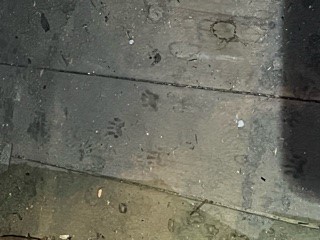
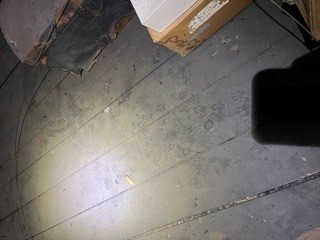
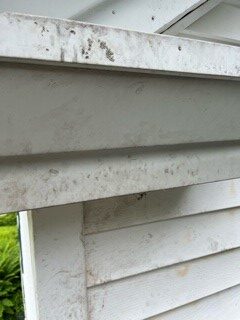
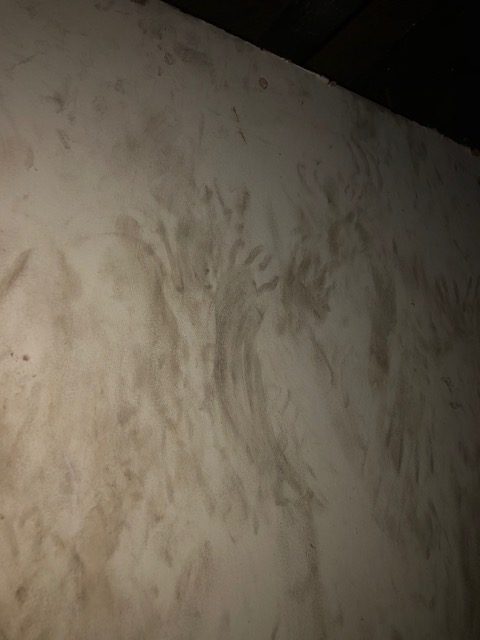
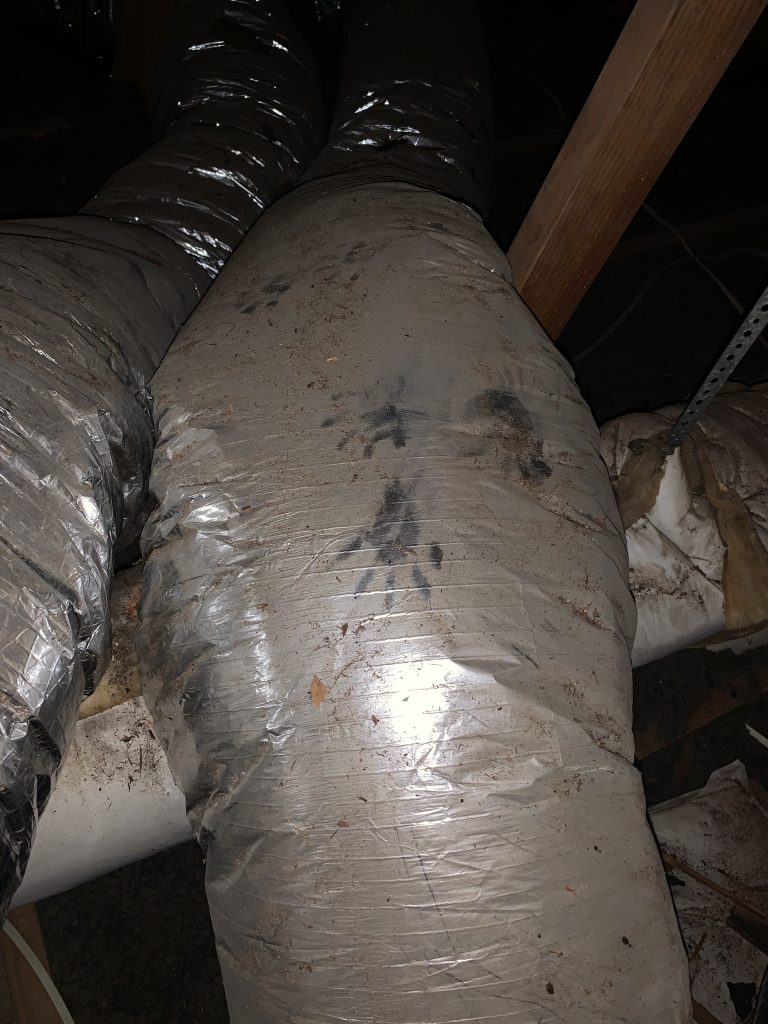
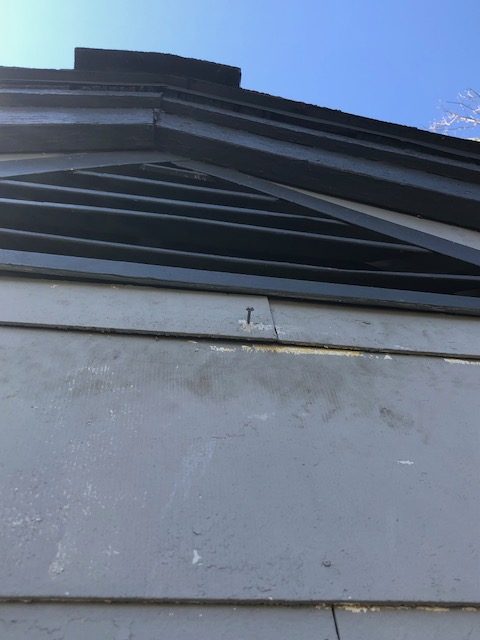
These pests have five toes on each foot, so their tracks resemble the handprints of a small child. Front footprints are about two and a half inches long, and hind prints often measure up to three and a half inches. Raccoon tracks usually appear in pairs, as their hind foot moves beside the opposite forefoot while walking.
Some common places to find raccoon tracks include:
Near garbage cans or dumpsters: Raccoons are often attracted to areas where they can scavenge for food, so tracks may be found around garbage cans or dumpsters.
Along fence lines or property boundaries: Raccoons are known to travel along fence lines or property boundaries as they move between areas in search of food or shelter.
Near water sources: Raccoons are attracted to water sources such as ponds, streams, or birdbaths, so tracks may be found near these areas.
In gardens or vegetable patches: Raccoons may leave tracks in gardens or vegetable patches while searching for food such as fruits, vegetables, or insects.
On decks or patios: Raccoons may walk across decks or patios in search of food or shelter, leaving tracks behind.
Near trees or shrubs: Raccoons are agile climbers and may leave tracks near trees or shrubs as they climb or explore.
In attics or crawl spaces: If raccoons have gained access to the attic or crawl space of a home, tracks may be found in these areas along with other signs of their presence.
Raccoon Scratch Marks
Raccoon scratch marks typically appear as a series of shallow, parallel lines on surfaces such as wood, drywall, or insulation. These marks are often around 2-3 inches apart and can vary in length depending on the size and strength of the raccoon. The scratches may be accompanied by small bits of debris or wood shavings, especially if the raccoon is attempting to create an entry point or nest.
Additionally, raccoon scratch marks may show signs of wear and tear over time, indicating repeated use of a particular area for climbing or accessing different parts of the property. Overall, these scratch marks are distinctive and can serve as a clear indication of raccoon activity on a homeowner’s property.
Raccoon Scat
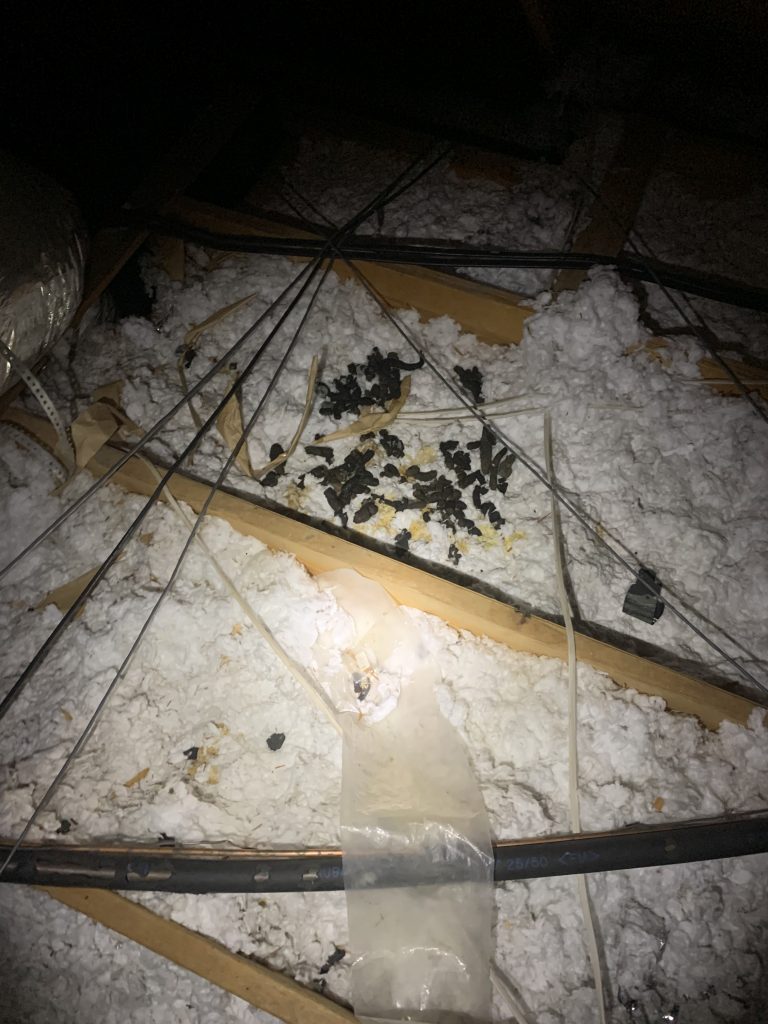
Raccoon droppings are often tubular in shape, similar to that of a dog’s feces, but slightly larger. They are typically dark in color and can contain undigested food like berries and seeds. Homeowners commonly find raccoon poop in areas where raccoons are active, such as attics, crawl spaces, or near trash cans where they forage for food.
Raccoon Sounds
The most common sign of a raccoon in your house is the noise. Homeowners hear movement noises like thumping and scurrying and vocal sounds. Typical vocalizations include purring, chittering, growling, snarling, hissing, whimpering, and even screeching.
How to Tell a Raccoon is in the Attic
Raccoons in the attic will cause damage. Raccoons may chew and claw through wooden beams, insulation, electrical wires, pipes, duct work and other structural components, potentially causing serious damage to the attic and your home’s infrastructure.
Generally, damage caused by raccoons in the attic includes building dens and creating latrine sites. Both activities destroy the attic’s insulation.
When they den in residential areas, raccoons create separate latrine sites. They consistently return to these locations to defecate and urinate. Raccoon droppings can spread raccoon roundworm (Baylisascaris procyonis), and raccoon urine can spread leptospirosis. Attempting to clean up after a raccoon can expose you to both diseases.
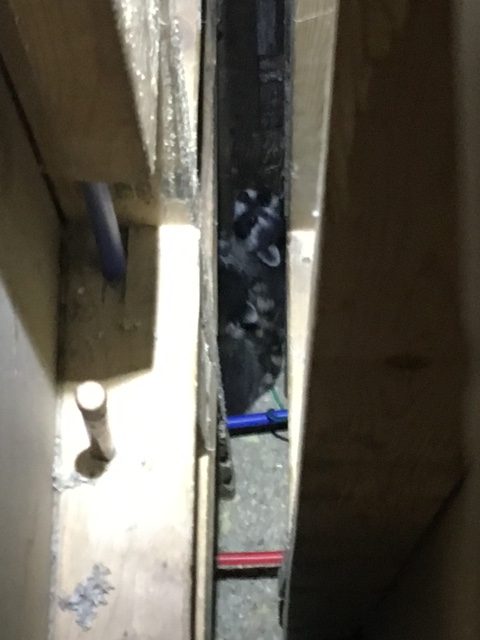
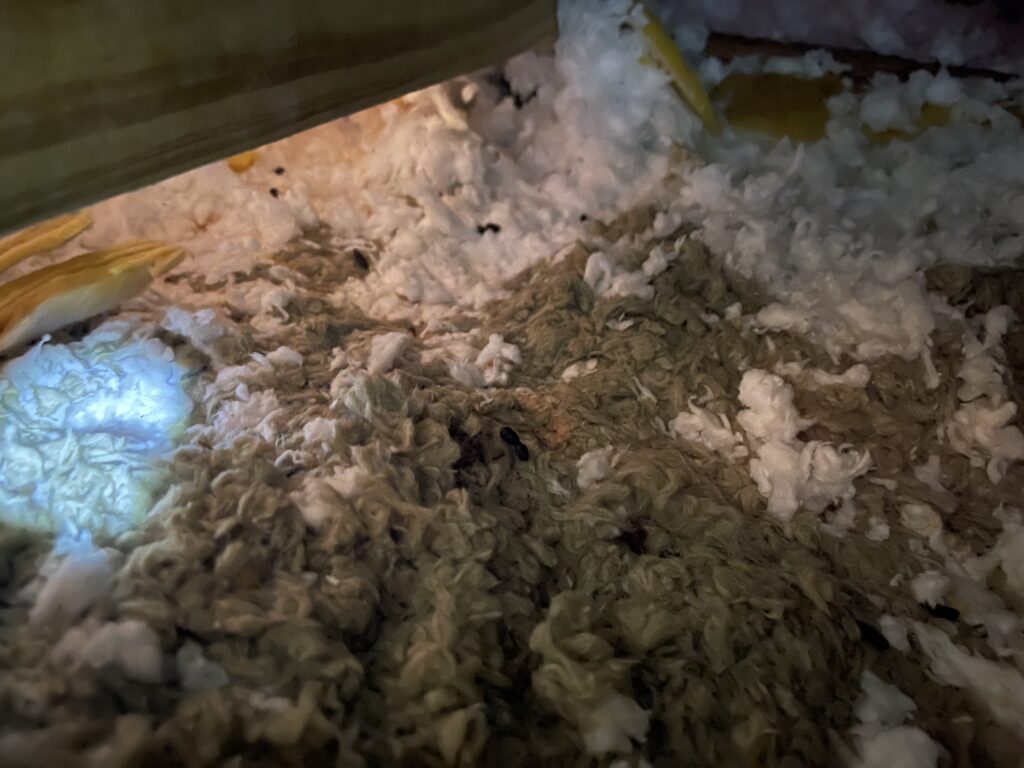
Mother raccoons enter attics because it is a safe place to give birth. The females will use insulation and other materials to create a nest for the baby raccoons.
NEW! Introducing the Home Critter Quiz!
How to Tell a Raccoon is on Roof
Raccoons typically gain entry to your home via the roof. They are excellent climbers. They can either scale the wall of your house or use tree branches to climb onto your roof.
Raccoons on roofs cause significant damage to your property. They can establish latrine sites and create large piles of droppings. Raccoon feces can damage shingles and spread diseases. Their feces often contain raccoon roundworm. These parasite eggs pose a serious health risk, as infection can lead to blindness or even death in humans.
Females are known to destroy soffits, fascia boards, shingles, vents, and insulation to establish denning sites. Once a raccoon creates or enlarges a hole in the rooftop, it becomes an easy pathway to the attic.
Raccoon signs on the roof include:
Smudges and hair on downspouts
Scratch marks on the trunks of trees
3- to 5-inch droppings in the same general area on the roof
Damaged attic vents or roofing
Hair, smudge marks or actual sighting in the chimney
How to Tell a Raccoon Problem in the Yard
How can you tell the difference between a raccoon passing through your yard and a raccoon problem?
When you see consistently see evidence of raccoons or start to notice damage, you have a raccoon problem.
The presence of raccoons is often marked by their messy eating habits — leaving trash and food scraps behind after feeding. They also rip up sod, steal siding off of homes, and scratch lawn ornaments and fences.
Property owners also may notice raccoon tracks, which can resemble the handprints of human children. Raccoons designate communal spaces to defecate. Latrine sites in your yard are clear signs of a raccoon problem.
They wreck the appearance of trees by climbing up and down, stripping bark. Raccoons love to raid gardens and chicken coops. They will steal fruits and vegetables, bird eggs, and livestock feed. They will snatch fish and frogs from the water if you have a pond.
Raccoons will dig holes in your lawn, searching for worms and grubs. They love finding birdseed in a bird feeder. If you have a swimming pool, expect a raccoon to take a dip. They love swimming or floating. Before you enter your pool, check for raccoon feces near the steps. They often relieve themselves before exiting the pool.
Just like raccoons create latrines in your home, they also create them near your garden, usually in piles of logs or brushy spots. This becomes a problem because raccoon feces can carry roundworms or roundworm eggs that can harm humans.
Call Trutech In to Get Raccoons Out
Raccoons are one of the most common nuisance wildlife homeowners experience. They do not hibernate so they can be a nuisance all year long. However, raccoon infestations are more likely to happen during the spring during raccoon breeding season.
The experts at Trutech Wildlife Service rely on over four decades of experience and training to get raccoons out of your house safely for you and the animal. Our proven trapping methods will solve the issue quickly. Our inspection process finds all current and potential raccoon entry points.


